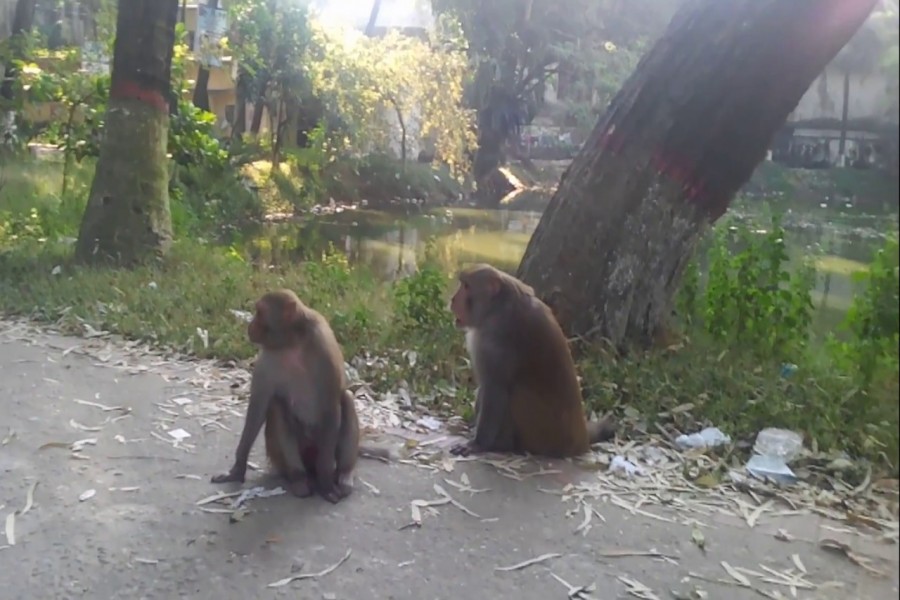The people of Bangladesh have never been known as inflicting cruelty on animals. Tales of emotional bond between pet animals and humans are plenty. The Bangla literature is filled with a number of immortal pieces showing unalloyed love of the masters for their pets. The heart-rending outburst of many after the deaths of these animals has found a permanent place in some short stories.
Except for the mindless killing of migratory birds at the hands of unscrupulous hunters and the hunting down of straying wild animals by village boys, the scenario, in general, is animal-friendly. For ages man and animals in Bangladesh have been seen develop an inextricable bond between them.
Against this backdrop, the brutal killing of 15 starving monkeys in a district-town early this month comes as a shock. The incident has done a great disservice to the image of Bangladesh, as it has drawn a wrong picture of the country and its people. The tale of the great savagery unleashed on the poor monkeys has stunned the nation. The photographs of the dead monkeys beside a derelict canal received wide media coverage. They also went viral on the social media.
Given the general people's fondness for the neighbourhood animals, and the latter's dependence on kind people for food, the incident of the 'monkey slaughter' emerges as something unsettling. To speak pithily, the scene of the brutality doesn't go with the nature of the country's people. People in Bangladesh do not even hit a street dog. Most of them leave these animals alone. If possible, they keep their food leftovers for the presumably starving dogs.
Monkeys do not make a usual spectacle in many parts of Bangladesh. There are areas where the primates arouse enormous curiosity and feeling of amusement among the general people. Many people collect monkeys to keep them as pets. Yet there are a few places which have been witness to large monkey populations for centuries. They, of course, include greater Sylhet and Chattogram regions. The older part of Dhaka is another habitat of monkeys. They are said to co-exist with the local residents. In spite of their playfully mischievous character, man and monkeys have been living together in Old Dhaka for long.
A section of the monkeys are adept at stealing food and petty kitchenware, thus prompting the sufferers to take preventive measures. Punishments also await the animals in extreme cases. But that cannot deter the genetically naughty primates. Thus the people in the monkey-infested areas have had to devise ways to learn how to co-exist with the pesky animals as neighbours.
The death of the 15 monkeys has been caused by poisoned food which was allegedly served by a few crooked and heartless people in the neighbourhood. Their express aim was the annihilation of the animals, which began roaming around the nearby villages in search of food.
Earlier, after the start of the coronavirus shutdown, the local forest department officials started a feeding programme for the monkeys. After the end of its tenure, the monkeys began going hungry. Normally, people in the nearby shopping areas would provide them with food leftovers. In the wards 8 and 9 under the municipality, there are around 2,500 primates living there for a long time. Isolated pockets of monkeys are nothing unusual in Bangladesh. The largest of them is located in Keshabpur upazila in Jashore district. The monkeys of this area have a 'love-hate' relationship with local people.
The killing of the 15 monkeys by mixing poison with their food has brought a lot of infamy for Bangladesh. But the people of this country are generally animal-friendly. It has amply been proved by the programmes to feed street dogs and cats by city-based youth groups during the ongoing shutdown.


